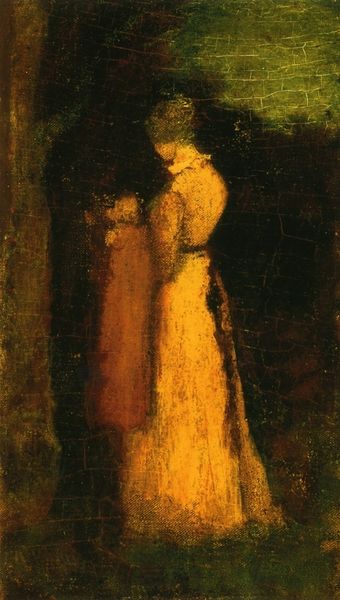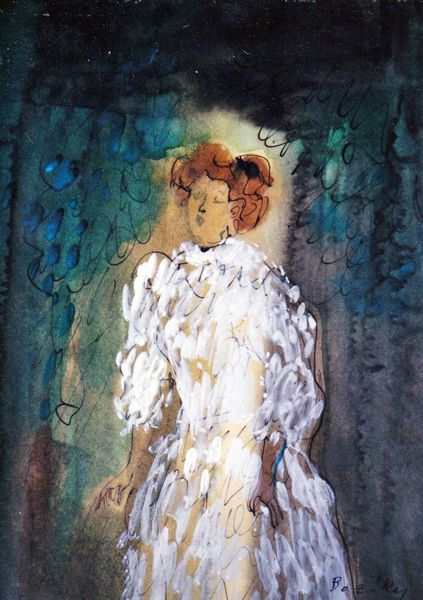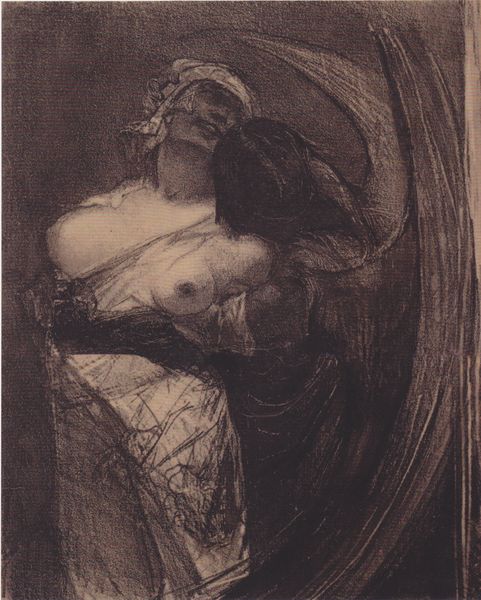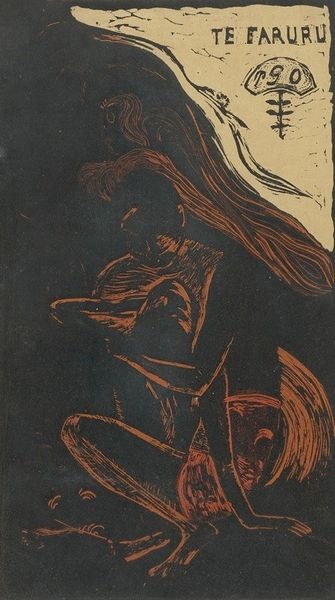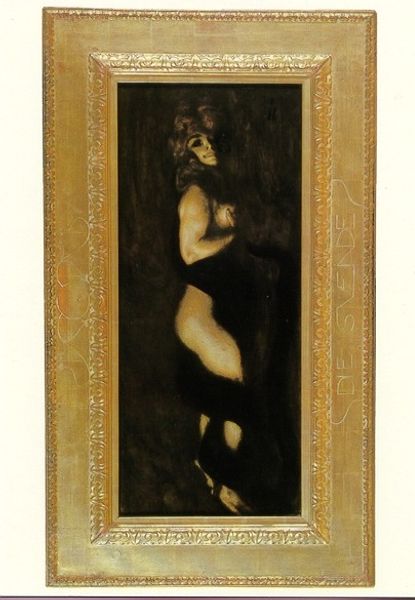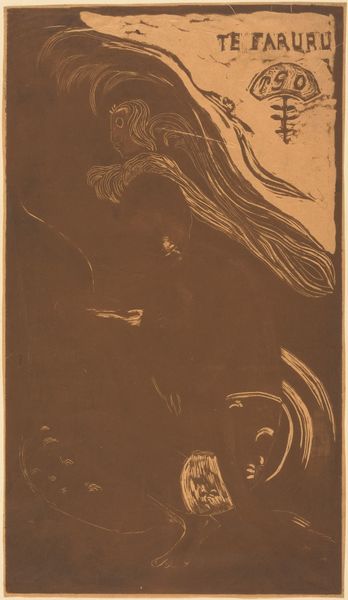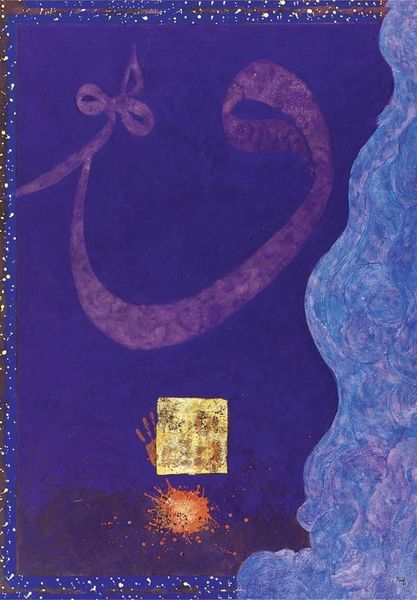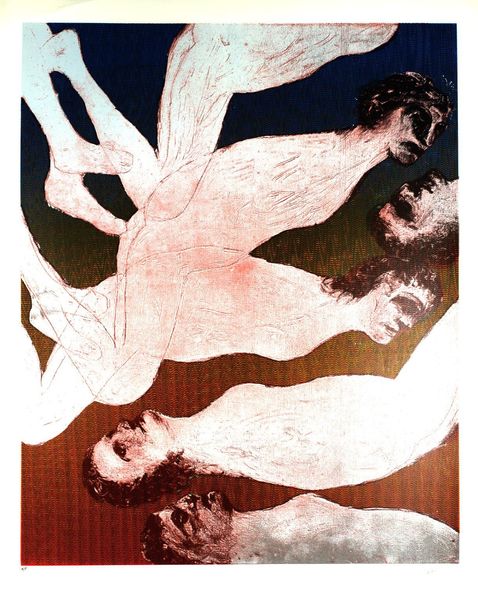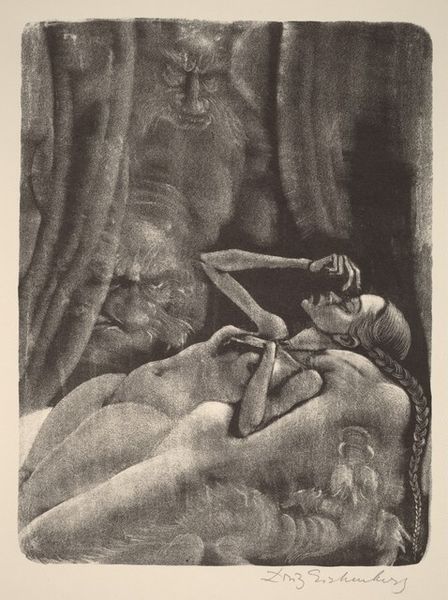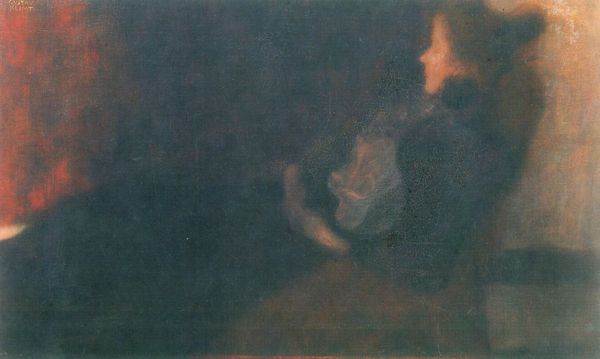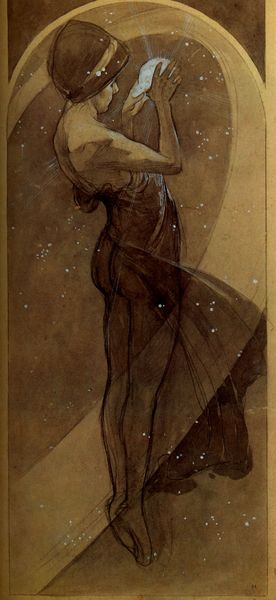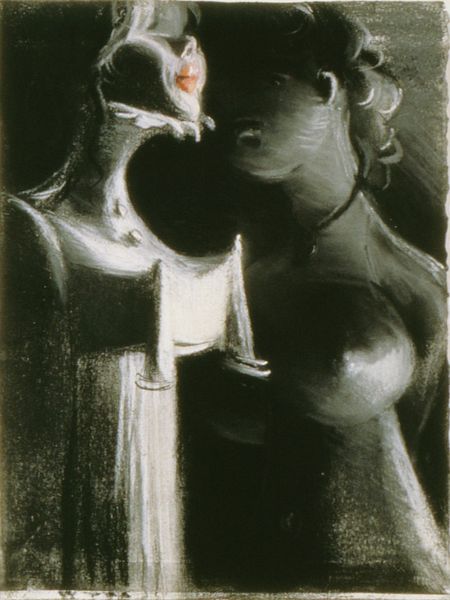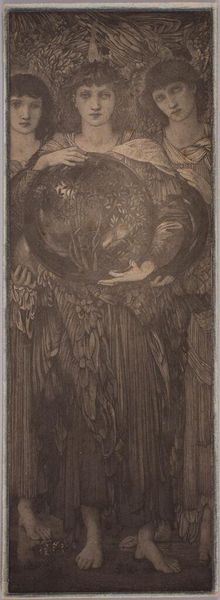
#
allegories
#
abstract painting
#
symbol
#
possibly oil pastel
#
oil painting
#
underpainting
#
painting painterly
#
watercolour bleed
#
mixed media
#
watercolor
#
expressionist
#
warm toned green
Dimensions: 60 x 44 cm
Copyright: Public domain
Curator: We’re standing before Gustav Klimt’s "Love," painted around 1895, currently housed in the Kunsthistorisches Museum in Vienna. Editor: My initial impression is of a haunting romance. There's a vertical composition divided asymmetrically with gold toned decorative panels framing a darker central image, the textural contrasts heightening a dreamlike atmosphere. Curator: Indeed. Klimt, particularly early in his career, wrestled with tradition even as he hinted toward his later, more overtly Symbolist approach. Here, he plays with allegories and early expressionist qualities. The lovers embracing below are seemingly unaware of the spectral faces looming above, barely visible and watching. Editor: Precisely! The visual planes create a symbolic reading. The warm gold panels decorated with roses act as a veil for this private moment, or perhaps indicate artifice and theater within society. Consider how the lack of solid form in the "spirits" emphasizes that those entities aren’t present. What they represent, instead, is judgment, guilt, or an intangible pressure from the culture surrounding them. Curator: The medium adds to this effect, I think. The blurring, those watercolour bleeds you see at the painting’s upper edge, and Klimt's visible underpainting techniques all reinforce the sense of fleeting time, of obscured vision. Even the artist’s use of warm toned green in an unexpected way emphasizes feelings of disharmony within a unified palette. Editor: Do you believe this painting is making a broader social commentary? As we move towards the end of the 19th century, social constraints around love and sex became topics of discussion as much as they continued to generate repression and persecution. How does it engage with the culture from which it emerges? Curator: I believe so. While its aesthetic qualities evoke the sensuality typical of Klimt, the symbolic narrative introduces concerns and societal apprehensions of its era. Editor: It’s fascinating how Klimt evokes potent questions on canvas that persist even today, regardless of whether a person decodes the symbolism, or feels an echo of his unease with its period origins. Curator: Ultimately, this piece highlights that duality of love — its pleasure and inherent, surrounding complications that even exist when you block everything else out.
Comments
No comments
Be the first to comment and join the conversation on the ultimate creative platform.
